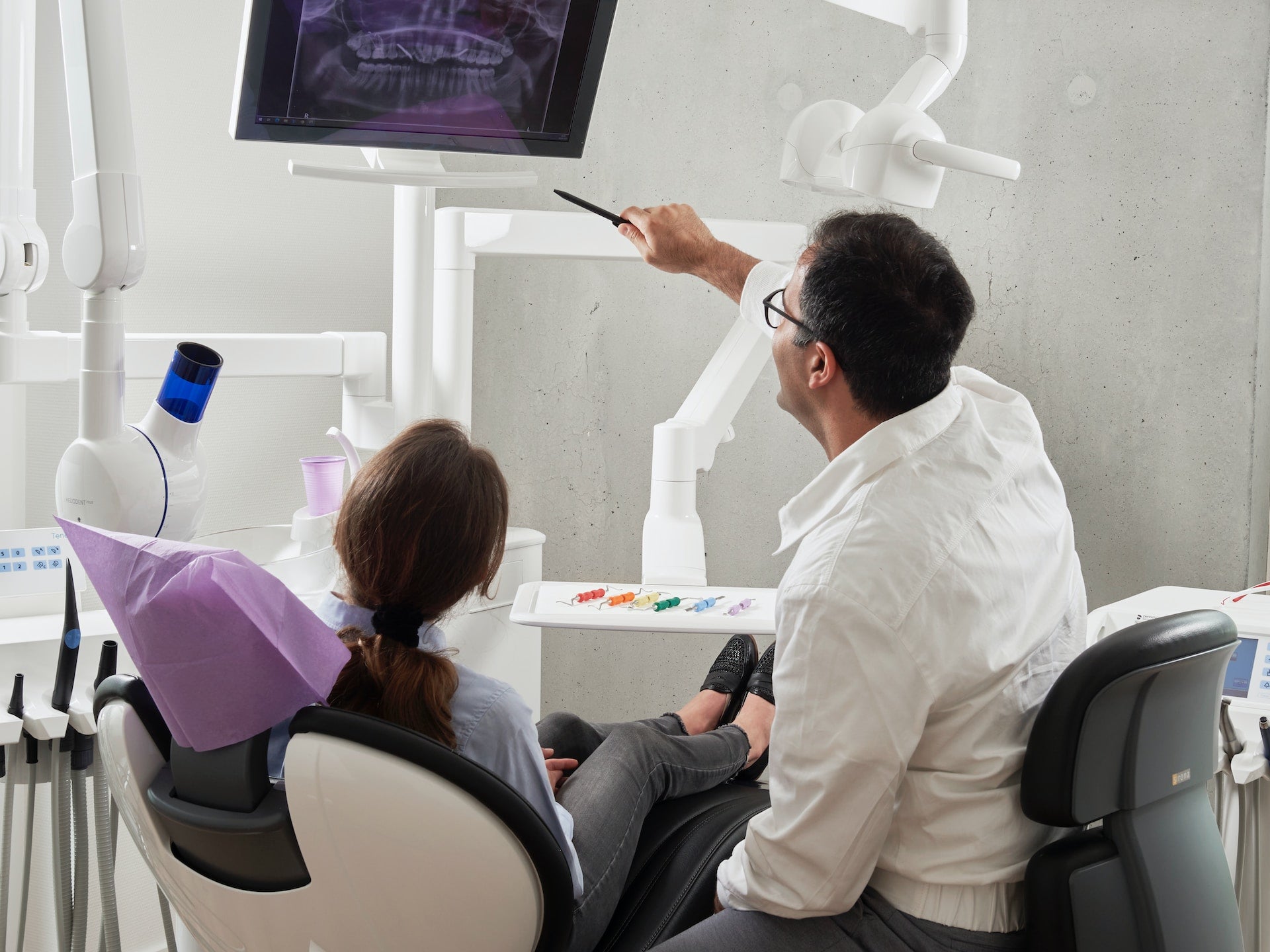

· By Trevor Horne
Integrating Intraoral Scanners into Dental Practices
Digital dentistry has been rapidly transforming the world of oral health care, with modern technologies streamlining various aspects of dental practice, from diagnostics to treatment planning. One such innovation reshaping the dental landscape is the intraoral scanner, a groundbreaking tool that captures detailed, precise digital impressions of a patient's oral structures. This non-invasive scanning device eliminates the need for traditional impression materials, promising enhanced patient comfort, accuracy, and improved workflow efficiency for dental professionals.
In this article, we will delve into the benefits of incorporating intraoral scanners into dental practices, highlighting their advantages and practical applications. Our goal is to offer a comprehensive understanding of how intraoral scanners can elevate the standard of patient care and how they enable dental professionals to stay ahead in a rapidly evolving industry.
By shedding light on the benefits and practical applications of intraoral scanners, we hope to encourage dental professionals to adapt to the evolving digital landscape, ultimately providing exceptional patient care and streamlining practice workflow.
Transform your dental practice with advanced, cutting-edge intraoral scanners and elevate your patient care to new heights. Browse our range of state-of-the-art dental equipment online today.
Benefits of Intraoral Scanners: Revolutionizing the Dental Experience
Intraoral scanners offer myriad benefits for both dental professionals and patients, significantly enhancing the overall dental experience:
- Enhanced Accuracy: Intraoral scanners capture precise digital impressions of a patient's oral cavity, eliminating the inaccuracies and distortions that often occur with traditional impression materials. This accuracy facilitates improved treatment outcomes and patient satisfaction.
- Improved Patient Comfort: The non-invasive nature of intraoral scanner technology minimizes patient discomfort during the impression-taking process, reducing gag reflexes and eliminating the need for multiple impression attempts.
- Streamlined Workflow: Digital impressions generated by intraoral scanners can be easily shared with dental laboratories and other involved healthcare professionals, expediting the fabrication of restorations, appliances, and treatment planning.
- Time and Cost Efficiency: By eliminating the need for physical impression materials and shipping, intraoral scanners reduce overall costs and materials waste and save valuable chairside time for both dental professionals and patients.
Clinical Applications: Tapping into the Versatility of Intraoral Scanners
Intraoral scanner technology can be effectively utilized across various dental specialities, proving to be a highly versatile tool in numerous clinical applications:
- Restorative Dentistry: Intraoral scanners dramatically improve the process of capturing impressions for crowns, bridges, inlays, and onlays, delivering highly accurate data to dental technicians and ensuring a precise fit of restorations.
- Orthodontics: Intraoral scanners facilitate the creation of accurate digital models for orthodontic appliances like clear aligners, retainers, or palatal expanders, streamlining the orthodontic treatment process and enhancing patient outcomes.
- Prosthodontics: In the field of prosthodontics, intraoral scanners help create detailed digital impressions to design and fabricate partial or complete dentures, as well as implant-supported restorations, ensuring optimal fit and function for patients.
- Treatment Planning: Intraoral scanner-generated digital models can be utilized in conjunction with advanced software for three-dimensional treatment planning, enabling dental professionals to visualize the patient's dentition more accurately and create a comprehensive treatment plan.
Choosing the Right Intraoral Scanner: Picking the Perfect Fit for Your Practice
Selecting the most suitable intraoral scanner for your dental practice depends on various factors:
- Image Quality: Evaluate the scanner’s image quality and resolution to ensure that it will provide accurate, detailed impressions for confident treatment planning and execution.
- Ease of Use: An easy-to-use scanner with an intuitive interface will minimize the learning curve for dental professionals while promoting efficient and effective data capture during patient appointments.
- Software Compatibility: Ensure that the intraoral scanner you choose is compatible with your current practice management software or provides a seamless integration path to your preferred dental laboratory.
- Technical Support: A robust technical support network – including training resources, troubleshooting assistance, and software updates – will help dental professionals get the most out of their investment in an intraoral scanner.
Integration and Training: Seamlessly Incorporating Intraoral Scanners into Dental Practice
Successfully integrating intraoral scanner technology into your dental practice begins with a smooth transition process involving device installation and staff training:
- System Installation: The initial installation of the intraoral scanner should be coordinated with the manufacturer or distributor to ensure correct setup, calibration, and software integration.
- Staff Training: Developing the proficient skills of your dental staff to use the intraoral scanner will be vital to the successful adoption of the technology. Consider arranging on-site training sessions, webinars, or workshops with the manufacturer to facilitate workforce competency.
- Practice with Mock Patients: Before using the scanner on actual patients, dental professionals should practice on themselves, colleagues, or dental models to build confidence and hone their skills.
- Gradual Integration: Smooth the transition by incorporating the intraoral scanner into your day-to-day practice gradually, initially using the technology on selected procedures and patients before fully integrating into the workflow.
Conclusion
Embracing digital dentistry innovations, especially the integration of intraoral scanners, is essential for dental professionals looking to elevate their practice and patient care. The advantages of intraoral scanners — heightened accuracy, patient comfort, and workflow efficiency among them — offer an attractive proposition for dental practices to stay competitive and deliver exceptional care in an increasingly digital world.
Drive your clients' success by upgrading their dental practices with the latest intraoral scanning technology from ProNorth Medical. As a medical device supplier, we offer an extensive range of high-quality dental equipment, including digital dentistry solutions, that can enhance patient care and improve practice efficiency. Browse our products and start reaping the rewards of digital dentistry today.
